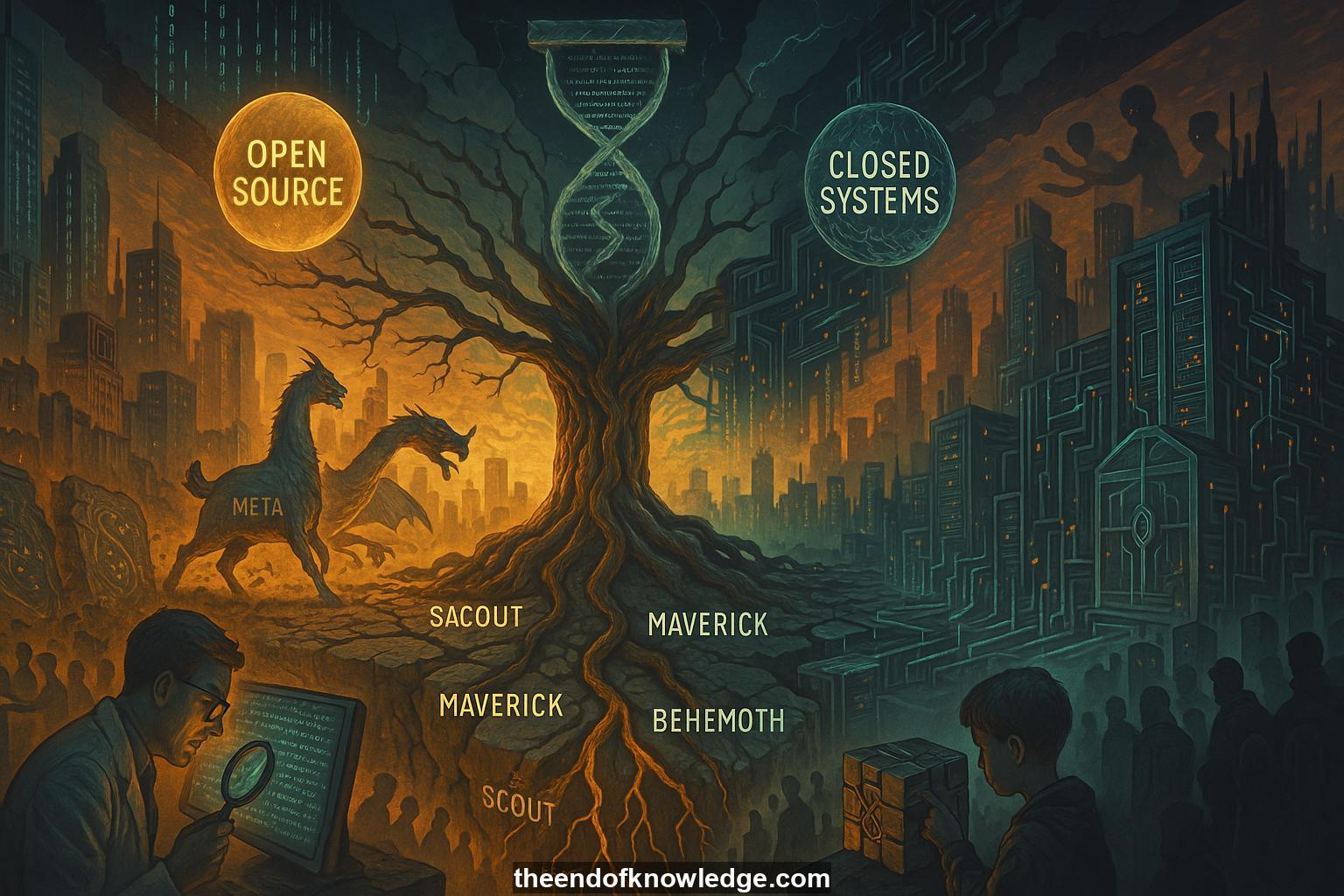 >
>
Concept Graph, Resume & KeyIdeas using DeepSeek R1 :
Resume:
discusses the launch of Meta's Llama 4 open-source models, focusing on their features, reception, and implications for the AI industry. Placio Domenech critically analyzes the models, highlighting their capabilities and limitations, while also reflecting on broader trends in AI development. He emphasizes the competitive nature of the AI landscape, with companies like Meta, Google, and DeepSeek vying for dominance. The discussion also touches on ethical considerations, the role of open-source models, and the potential risks and benefits of advancing AI technologies. Domenech critiques the marketing-driven narrative surrounding AI models and advocates for a more critical and nuanced approach to understanding their impact.30 Key Ideas:
1.- Meta launched Llama 4, a family of open-source models, including Scout, Maverick, and Behemoth, with varying parameter sizes and capabilities.
2.- Llama 4 Scout has 17 billion active parameters and a 10 million token context length, optimized for single-GPU execution.
3.- Llama 4 Maverick, with 128 experts, outperforms GPT-4 and Gemini Flash 2 in benchmarks, despite being smaller and more efficient.
4.- Llama 4 Behemoth is a massive model with over 2 trillion parameters, still in training, aiming to be the highest-performing base model.
5.- Meta emphasizes open-source AI as a strategic move to gain community favor and compete with Chinese models like DeepSeek R1.
6.- Critics argue that Llama 4 models, while impressive, do not surpass top models like DeepSeek R1 and GPT-4 in capabilities.
7.- The models' performance is questioned, with concerns about benchmark manipulation and limited accessibility due to hardware requirements.
8.- Meta's approach to open-source AI is seen as a marketing strategy to stay competitive in the AI race.
9.- critiques the lack of transparency in AI development and the potential for misinformation in model comparisons.
10.- Ethical considerations, such as bias mitigation and security, are addressed through tools like Jamaward and Prompt Ward.
11.- Llama 4 models integrate multimodal capabilities, making them versatile for various applications.
12.- discusses the global AI race, with the U.S. and China leading, and Europe struggling to compete.
13.- Open-source AI raises concerns about democratization, with potential risks of misuse and unequal access to advanced models.
14.- The importance of critical thinking and ethical discourse in AI development is emphasized.
15.- reflects on the limitations of current AI models and the need for new architectures to achieve true general intelligence.
16.- Llama 4 models are compared to other state-of-the-art models, highlighting their strengths and weaknesses.
17.- The role of influencers and media in shaping public perception of AI is critiqued for lacking depth.
18.- discusses the potential for AI to revolutionize industries like healthcare, education, and robotics.
19.- Concerns about data privacy and security in AI models are highlighted, particularly in open-source releases.
20.- advocates for a balanced approach to AI development, prioritizing ethics over mere technical advancements.
21.- The global competition in AI is seen as a strategic battle, with implications for economic and geopolitical power.
22.- critiques the marketing-driven narrative surrounding AI and calls for more nuanced discussions.
23.- The importance of hardware accessibility in determining the usability of AI models is discussed.
24.- Llama 4 models are seen as a step forward for Meta but not a revolutionary leap in AI capabilities.
25.- reflects on the potential for AI to exacerbate existing inequalities if not developed responsibly.
26.- The role of regulatory frameworks in controlling AI development is discussed, with concerns about global cooperation.
27.- emphasizes the need for transparency in AI development to build trust and ensure accountability.
28.- The potential for AI to empower individuals and communities is highlighted, but with caveats about access and control.
29.- calls for a more informed and critical approach to understanding the impact of AI on society.
30.- The future of AI is seen as uncertain, with both promising opportunities and significant risks on the horizon.
Interviews by Plácido Doménech Espí & Guests - Knowledge Vault built byDavid Vivancos 2025